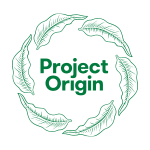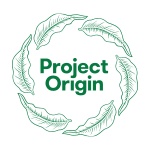News from Ethiopia: ECX, experiments and community projects
After a recent trip to origin in Ethiopia, we return invigorated and excited about new discoveries and developments from one of our favourite coffee-producing countries.
It is an exciting time for Ethiopian coffees, not only because harvest is complete and fresh crops are ready to be spread across the world, but because things are changing – و traceability is at the centre of the changes.
The Ethiopian Commodity Exchange (ECX)
Currently, when buying coffee through the ECX trading system, if you purchase a lot from Yirgacheffe, there is no way to know if you are actually buying a coffee from the sub-regions of Konga, Idido or Aricha. The government regulations state that all of these coffees should only be called Yirgacheffe.
Sure, some exporters have means of finding out and others just tell you what they think you want to hear. The ECX trading system, established in 2008, was designed to ensure coffee was sold based only on region, process and grade. Most importantly, it was established to ensure producers were paid a fair price and got paid on time when coffees were sold.
However, knowing the specific processing station, or being able to visit that station and see exactly how they process the coffees, whether they dry for twelve days or fifteen and whether they wash with fresh spring water or dirty river water were not on the agena – they’re just things us specialty coffee kids want to know.
The Ethiopian government has widely acknowledged that traceability is an issue it must address when it comes to coffee exports, and much of the pressure has been applied, surprisingly, by global heavyweights such as Nestle and Starbucks. For that, we should all be grateful.
During our recent trip we celebrated with our exporter, Primrose, with some local Ethiopian wine after an announcement was made by the government about proposed changes. These included a commitment to improving traceability; having lot numbers assigned to coffees when they left coffee processing stations/mills bound for ECX warehouses; and having lots delivered direct to the exporter (not unloaded into the ECX warehouse as happens currently) once coffee has been sampled and graded by ECX officials and a purchase has been made. These changes will mean if an exporter has a relationship with a processing station in a particular area, like Aricha in Yirgacheffe, they could track a coffee lot all the way from sample, through grading, purchase, and finally into their warehouse.
It’s a big change. And it has big implications. This isn’t a done deal yet, but the momentum is certainly promising, so watch this space.
The ECX Grading System
If you’ve ever wanted to know how Ethiopian coffee grading works, here’s the brief run down on current government regulations taken from an article by Lyndon’s Coffee published end of 2015.
“It begins with sellers bringing coffee to the ECX warehouse where it will be graded and analysed by the Exchange’s official liquorers (coffee cuppers).”
“…40% of the value of the final score comes from the quality of the green bean (defect count etc.) and the remaining 60% is attributed to the cup profile (how well the coffee cups). After both aspects?have been scrutinised, the coffee is given a score. This score, together with the way the coffee is processed – i.e. washed or natural, will determine its grade. This grade and the name of the region where the coffee comes from are the only pieces of information that the buyer will get.”
Do note that these are the regulations for official grading of the raw coffees when they are received at an ECX warehouse. Grading can be changed and scored higher if additional cleaning and screening of coffee lots is done after it is purchased. For example, a Natural Grade 3 could become Grade 2 by having further cleaning and screening done by the exporter who purchased it.
The whole article is pretty useful to understand why the ECX exists and you can find it here http://lyndonscoffee.com/ethiopian-coffee-exchange-ecx/
Currently, washed coffees for export only come in Grade 1 or 2. Grades 3 to 5 are for local consumption only. Naturals for export come in Grades 1 to 5, below that they are classed as UG “Under grade” and used only for the local market.
Project Origin’s Ethiopian Coffees
Up until 2016, Project Origin sourced only Grade 1 Ethiopian coffees, categorising them under our Green Label (86-89 points) or Gold Label (90+).
In 2016, we sourced our first Grade 3 Natural Shakisso and placed it under our Black Label (83-85 points) due to demand for these coffees at lower price points, given the pressure created by market competition and a lower AUD. We also sourced Grade 2 Washed Limu, also under Black Label.
But since our most recent visit to Ethiopia, we’ve learned an important thing about grading. We believe it is important for roasters to understand the process the ECX uses, so that they can make more informed buying decisions. So, an important factor we learned is that the ECX grading system grades the raw coffee under government regulation when it is being received into the ECX warehouse; it is not a grading of the coffee after it has been purchased and sent to a mill for hulling, cleaning, screening and further sorting.
Working with Primrose, Project Origin sets the standards for milling of all our lots and those standards are different to the Ethiopian government regulations. Regardless of whether a Grade 1, 2 or 3 has been bought as the raw coffee through the ECX, Project Origin insists on screening and grading our coffees to a very high level of cleanliness – up to three minor defects and zero major defects for Grade 1 and up to 5 minor and zero major defects for Grade 2 or 3.
What this means is that as a roaster, you get the benefit of the lower price point with none of the potentially major defects, or poor cup quality that might come with it.
However, there are always risks when it comes to relying on another business to mill your coffee exactly as you’ve asked, whether it’s a Grade 1, 2 or 3. Even as we found with our experimental lots in 2016, some were exactly as we expected, and others were not. At the end of the day, the mill manager has a business to run and needs to be productive just like any other business. This means sometimes the screening or grading might be better than at other times.
There is also the consideration that at different points in the harvest cycle, the raw material being bought might be better than at other times. For example, when the harvest is in full swing, there is so much ripe fruit that one would automatically start at an advantage compared to the end of harvest, when pickings from the same regions might be ending and so the raw material may be more mixed in its quality.
Another added difficulty for the roaster is that not every green bean company will set the same milling standards as each other when exporting from Ethiopia. So buying a Yirgacheffe Grade 1 from one company does not mean you will get the same quality as buying a Yirgacheffe Grade 1 from another company. In our opinion, the only way to truly “grade” a coffee for your purposes of roasting and sharing with your customers is to cup and taste and judge what’s in the cup and then decide if the price is worth the quality.
For this reason, moving forward we will continue to source coffees from Grade 1 to Grade 3 but we will no longer list the grade on our product list. We will give our cupping score and notes as always and place them in Black, Green or Gold Label accordingly. We will also price them based on the quality in the cup, rarity of the coffee and the price we paid for it.

Project Origin’s Future Plans
Flavour Profiles
In 2016, Project Origin introduced the experimental Ethiopian lots Leku, Areka and Haru. These natural lots were designed to target specific flavour profiles and create exceptional coffees, whilst still working under the blindfold of the ECX trading system. They had their successes and failures, as all experiments do.
In 2017, Project Origin will continue its obsession with improving quality and sharing amazing flavours, introducing coffees with names that reflect the flavour profiles of the cup, namely Red, Purple and White to reflect vibrant/red fruit, deep/purple fruit and clarity/florals respectively. We expect these to begin arriving by early June.
Community Support
But as always, quality is just half of what Project Origin is about. The other half is community. As with India and many countries in Central and South America, we allocate funds from our sales (AUD$8 from every bag) to commit to project work, which improves not only quality of coffee, but quality of life.
Throughout 2017, we will be helping fund two projects on Ethiopia. The first is the building of processing infrastructure at a washing station in Adola, Guji that we will work closely with next harvest. By doing this, we hope to open up the variety of processing options available to the owner of the station, improve quality, and thus increase the sale price of their coffee. By helping them increase the price they can sell the coffee for, they can afford to pay more to the local farmers that bring them their harvest each year and the workers at the processing station.
The second project is to fund the building of a well in the town of Aricha, in Yirgacheffe. When we visited this region, our host showed us around to a few mills in the area, renowned by us specialty coffee kids as producing some of the most impressive coffees across the globe. One of the things that struck us most was the limited access to clean drinking water.
Every day, in every home, the locals must carry their empty yellow water drums to the nearest well to refill them and carry them back. They do this on foot, or take their donkey, or hitch a ride on a cart if they don’t have their own, but everyone has to do it. So this year, you can take pride in the fact that every bag of coffee you buy from Project Origin helps fund projects like these.
Further Experiments
With the pending changes to regulations around traceability we are very excited to work closely with our exporter, Primrose, and also mill owners in different regions to explore the potential of Ethiopian coffee and bring even more amazing coffees to the world. Our experimental lots will evolve further as we gain direct access to coffee processing stations and get the opportunity to work closely with our partners in Ethiopia.
We will keep you posted as this unfolds, but suffice to say that currently we have made connections in multiple growing regions, such as Sidama, Yirgacheffe and Keffa among them, with several mill owners that are just as passionate about quality as we are.
We are so excited to share with you what we will create in collaboration with them in coming seasons – it is going to be fantastic.
For this season, we’ll be hosting some cupping sessions around Australia, beginning with Melbourne at the Melbourne International Coffee Expo (MICE) on Thursday 30العاشر and Friday 31شارع at 11:45am – 12:45pm. Space is limited based on the room size. Please let us know if you will be there and would like to come along.


